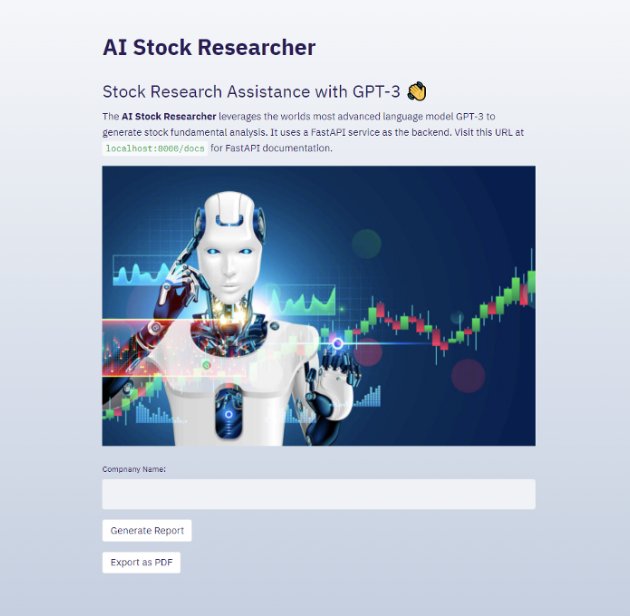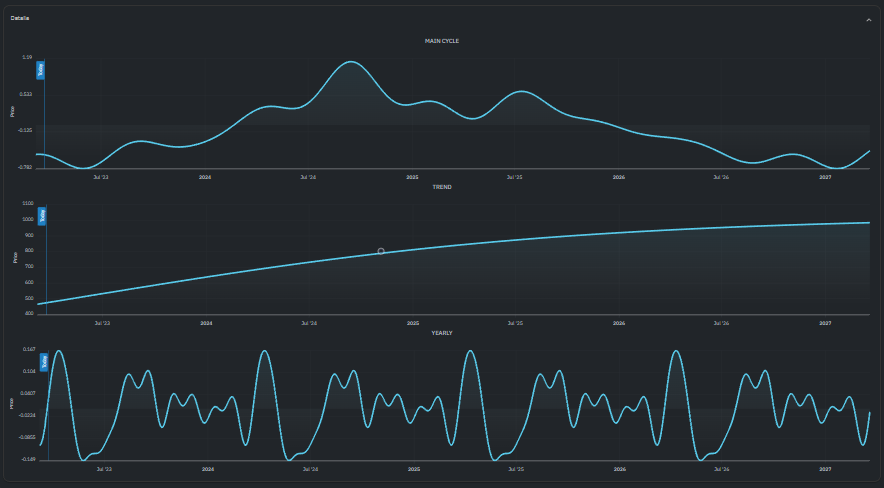20 Excellent Pieces Of Advice For Picking AI Stock Trading Sites
20 Excellent Pieces Of Advice For Picking AI Stock Trading Sites
Blog Article
Top 10 Tips For Evaluating The Security And Privacy Of Ai Stock Predicting/Analyzing Trading Platforms
When using AI-based trading platforms that predict and analyze the price of stock security and privacy are key. These platforms usually handle sensitive personal and financial information. A breach or misused data could result in significant financial losses and reputational damage. Here are 10 best tips to assess the security and privacy of these websites.
1. Examine the Data Encryption
Secure transmission of data: Make sure the platform uses secure protocols (e.g. TLS/SSL) to encrypt data transmitted between your device and the servers.
Secure transport of data Make sure that the data stored on the server of the platform has been secured with a strong encryption standard, like AES-256.
Make sure the platform supports encryption end-to-end of sensitive data or communications.
2. Examine the Authentication Measures
Two-factor authentication (copyright) Check if the platform supports copyright to provide an additional layer of security.
Make sure you have biometric authentication.
Password policy: Check to determine if your service has strict policies on passwords.
3. Verify Compliance with the Rules
Financial regulations: Make sure that the platform is compliant with pertinent financial laws (e.g., SEC, FINRA, MiFID II).
Privacy laws for data: Be sure that you are in compliance with data privacy laws that apply to your business (if applicable) (e.g. CCPA or GDPR).
Audit certifications. Verify that the platform has passed security third-party tests or has been accredited (e.g. SOC 2 and ISO 27001).
4. Review the Data Access Controls
Access based on role: Use access controls based on role to restrict access to information to authentic users.
Permission levels: Check if you can assign granular permissions to different users or team members.
Activity monitoring: Determine if the platform monitors and records user activity for suspicious behavior.
5. Assess the Management of Vulnerability
Regular updates: Ensure that the platform is regularly updating its software to patch security holes.
Check that your platform is regularly screened for penetration testing in order to detect security flaws and then fix these vulnerabilities.
Check for bug bounty programs. They're designed to encourage external security researchers (such as those at Google) to share vulnerabilities.
6. Evaluate Data Privacy Policies
Transparency: Review the privacy policies on the platform to understand how your data is used, collected and shared.
Data minimization is the process of ensuring that only data needed for the functionality of a platform is collected by a platform.
Data sharing with third parties: Check that the platform is able to share your data with a third party and If so then, in what way.
7. Secure API usage can be monitored
API security - Check that the API of your application uses secured authentication methods, like OAuth or API keys, as well as encrypts all data exchanges.
Rate limit - Check that the API is fitted with limits on rate to stop abuses or attacks using brute force.
Examine access logs. The platform should log API use and access in order to audit and monitor.
8. Review the recovery of an incident and respond
Incident Response Plan: Ensure your platform is well-defined incident response procedure for handling data breaches.
Notification policies: Determine if users are notified promptly in case of a security incident.
Check the data backups and disaster recovery plans.
9. Evaluation of Physical Security Measures
Data center Security: Make sure that servers are located in secure data centers, with physical security measures (e.g., monitoring, access controls).
Redundancy - Make sure that your platform is outfitted with redundant systems to guarantee data availability even if hardware fails.
Geographic distribution: To boost resilience, verify that the data is spread across multiple geographic locations.
10. Check the privacy settings of your users
Data deletion. Make sure you can permanently delete data from the service when you stop utilizing the service.
Privacy settings: Make sure to check if the platform provides privacy settings that control the data that is public or shared.
Anonymization: Check if the your data is encrypted to aid in machine learning or analysis.
Bonus Tips
Reviews and reputation of users Review reviews and feedback from customers to assess the platform's record on security and privacy.
Trial period: Take advantage of the demo or trial version for free to test the privacy and security features.
Customer Support: Ensure that the platform offers a solid support for issues or concerns related to security.
With these suggestions to evaluate the security and privacy of AI platform for predicting and analyzing stocks to ensure that your data and financial information are secured. Secure platforms not only protects your assets, but creates confidence and trust in its offerings. Check out the best ai stock price prediction for blog tips including best ai stocks to buy, stock analysis websites, chart analysis ai, stock ai, ai for investing, ai trading platform, best ai stocks to buy, stock ai, chart analysis ai, ai investment stock and more.
Top 10 Ways To Evaluate The Latency And Speed Of Ai Stock Trading Platforms
When you are evaluating AI trading platforms which forecast or analyze stock prices, speed and latency are key factors, particularly for high-frequency traders and algorithmic traders. Even milliseconds can affect the execution of trades and even profitability. Here are 10 of the best methods to determine the speed and latency of trading platforms.
1. Assess the real-time data feeds
Data delivery speed Be sure that the platform is able to deliver real-time data (e.g. sub-millisecond delay).
Verify the source's proximity to the major exchanges.
Data compression: Check if your platform utilizes efficient data compression techniques in order to accelerate the speed of data transfer.
2. Test Rate for Trade Execution Rate
Order processing time It is the amount of time it takes for the platform to process and execute trades after you have placed an order.
Direct market access: Check whether the exchange allows direct orders to be made to the exchange.
Execution reports. Verify that the platform provides comprehensive execution reports. The reports should contain dates for order submission, confirmation, and fill.
3. Examine the Receptivity of Platforms
User interface (UI) speed: See the speed at which the UI of your platform responds to inputs (e.g., clicking buttons or loading charts).
Chart updates: Verify that charts and visuals are updated in real-time, without delay.
Mobile app performance. If you are using an app designed for mobile be sure that it's running as fast and smoothly as the desktop app.
4. Look for networks with low-latency infrastructure.
Servers' location The platform uses a low-latency server located near financial hubs and exchanges.
Co-location service: Find out whether your platform has this option. This lets you host trading algorithm on servers close to the exchange.
High-speed Networks: Confirm the use of high-speed, fiber-optic network or other technologies that have low latency.
5. Test the backtesting and simulation speed
Test the platform's capacity to analyze and process historical data.
The latency on platforms is required to allow for real-time simulations of trades.
Parallel processing: Determine if the platform utilizes parallel processing or distributed computation to speed up calculations.
6. Calculate API Latency
API response time: This is the speed at the rate at which an API platform responds to requests.
Rate limits: Verify whether the API has acceptable rate limits to avoid delays in high-frequency trading.
WebSocket Check if the platform supports WebSocket protocols that allow streaming of data in real-time with minimal latency.
7. Test stability of the platform while under load
Trading scenarios with high volume Test the platform's stability and ability to respond by simulated trading scenarios.
Market volatility: Try out the platform in times that are high in volatility to test whether it can cope with rapid price changes.
Stress testing: Find out if your platform provides methods for stress testing strategies in extreme conditions.
8. Evaluation of Network and Connectivity
Speed requirements for Internet: Ensure your connection is up to the recommended platform speed.
Check for redundant connections.
VPN latency: If you use a VPN be sure to check whether it has a significant amount of latency, and if the service offers alternatives.
9. Make sure to look for speed optimization features
Pre-trade analysis The platform must provide analysis of the trade in order to improve process of routing orders and speed up execution.
Smart order route (SOR) You can check to determine if SOR is used by the platform in order to determine the most speedy and most cost-effective execution locations.
Monitoring latency: Find out if the platform offers tools to monitor and analyze latency in real-time.
Benchmarks for User Feedback Review
Feedback from users: Use reviews from users to assess the platform's performance with regard to speed and latency.
Benchmarks from third-party sources Check out independent reviews or benchmarks comparing the performance of the platform with that of its competitors.
Case studies: Check whether a platform offers cases studies or testimonials that demonstrate the low-latency capabilities.
Bonus Tips
Use the free trial or demo period to evaluate your platform's speed and latency in real-world conditions.
Support for customers: Make sure the platform provides assistance for issues related to latency or optimization.
Hardware requirements: Determine if the platform requires specific hardware (e.g. high-performance PCs) to operate at its maximum speed.
These guidelines will assist you evaluate the speed and latency of AI software for predicting and analyzing stocks. In this way, you'll be able to choose a platform which meets your needs while minimizing delay. Low latency is crucial for algorithmic and high-frequency traders. Even the smallest delay could have a major impact on profitability. Have a look at the best best stock analysis app url for more examples including best ai trading platform, ai for investing, ai stock price prediction, stock analysis websites, ai stock, ai trading bot, best stock analysis website, ai stock predictions, copyright ai bot, investing ai and more.